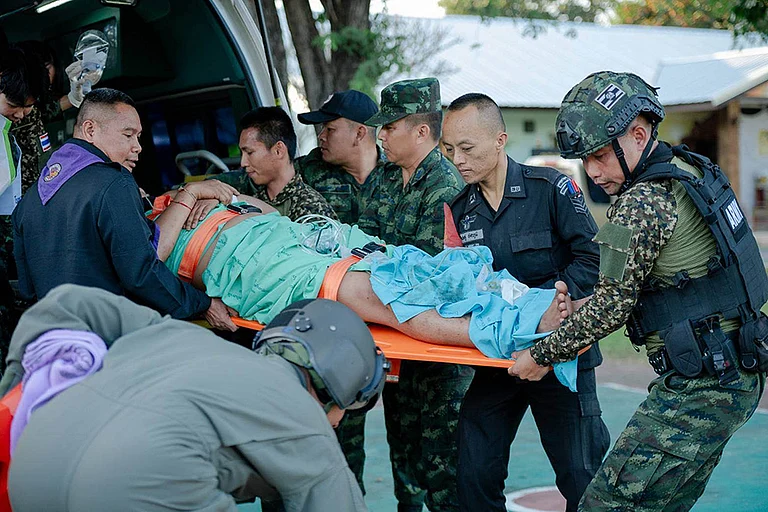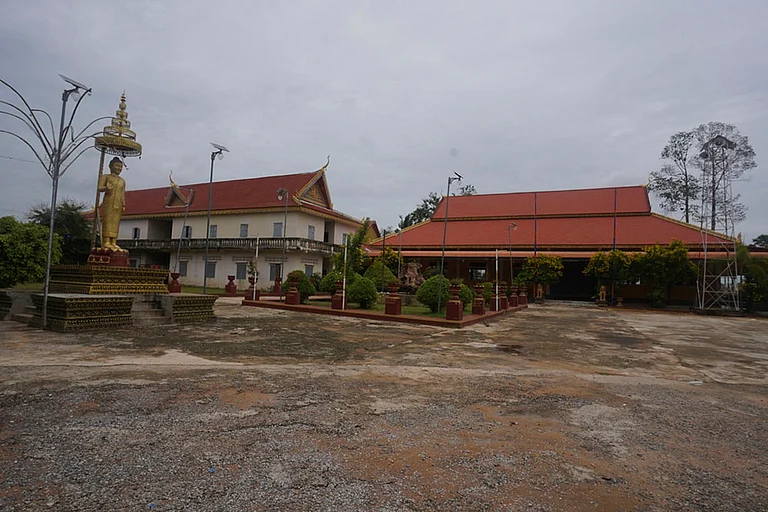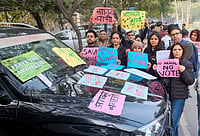An armed clash has erupted between South Asian neighbors Thailand and Cambodia, following weeks of heightened tensions that began on May 28, when a Cambodian soldier was killed in an early morning skirmish near the Emerald Triangle—the border region shared by Thailand, Cambodia, and Laos.
Once united by a long-standing friendship and the aspiration “to live and grow together,” the two nations are now locked in active military confrontations. The latest clash on July 24 left 11 Thai civilians dead.
However, the countries also have a history of conflict. Now, both have blamed each other for initiating the latest escalation. Thailand’s foreign ministry said that Cambodian troops fired “heavy artillery” on a Thai military base on Thursday morning, targeting a hospital.
Thai officials accused Cambodian troops of opening fire first, deploying a surveillance drone and advancing with rocket launchers. Cambodia, however, condemned the airstrike and broader hostilities as “unprovoked military aggression,” according to a statement reported by Agence France-Presse. Cambodia’s former Prime Minister Hun Sen alleged that two Cambodian provinces had come under heavy Thai shelling.
In a public statement, Cambodian Prime Minister Hun Manet said, “Cambodia has always taken a stand to solve problems peacefully, but in this case we have no choice but to respond with armed forces against armed aggression.”
What happened after May 28?
When a Cambodian soldier was killed in a clash between the two south Asian neighbours, both countries accused each other of being the aggressor. Cambodia’s Ministry of National Defense stated that Thai forces opened fire on a trench which was earlier used as a Cambodian army position. On the contrary, the Thai military asserted that its troops acted in self-defense, claiming they responded only after Cambodian forces “started using weapons” during what it described as a misunderstanding in the contested border zone.
Hun Sen — who relinquished the Cambodian premiership to his son, the now Prime Minister Hun Manet — still remains influential as the Senate President. He said: “We hate war, but we are compelled to wage it when facing foreign aggression.”
He added that supports the “decision to send troops and heavy weapons to the border to prepare for a counterattack in case of a further invasion.”
The Temporary De-escalation
As per the Association of Southeast Asian Nations charter, Cambodia and Thailand are expected to resolve disputes peacefully. The hope for de-escalation emerged when both countries on June 8 appeared to be sending their troops back to military positions that were agreed upon last year. Paetongtarn Shinawatra, the 31st Prime Minister of Thailand since 2024 who is now suspended from office over a phone call scandal earlier this month, said in a statement the countries agreed “to jointly adjust military forces at points of conflict to reduce the atmosphere of confrontation.”
However, the reciprocal measures in diplomatic policies disturbed the short-lived ease in tensions. The Thai military seized control of crucial border checkpoints and Bangkok threatened to cut off electricity and internet services to Cambodia.
In retaliation, Cambodia banned Thai media broadcasts—including television programs and films—and severed cross-border internet connections to Thailand.
On June 17, Cambodia further tightened measures by prohibiting the import of Thai fruit and vegetables at 9AM. In response, Thailand barred its citizens from crossing into Cambodia to work in Poipet’s casinos and entertainment hubs, a Cambodian boomtown on the Thai border.
Adding to the strain, Cambodian Prime Minister Hun Manet announced on June 16 via Facebook that his government had formally appealed to the International Court of Justice (ICJ) to help resolve the ongoing border dispute. “Cambodia chooses international law and peace,” he stated a day prior. However, Thailand, refused an intervention from the ICJ, saying “a third party may not always be conducive to the preservation of amicable relations among States, particularly in sensitive matters involving complex historical, territorial, or political dimensions.”
How It All Began
The root of the tensions between the two nations exists largely because of cartographical demarcations set by France. The border between Thailand and Cambodia in Southeast Asia was shaped by the 1904 Franco-Siamese Treaty, signed during the French colonial era. This agreement established the Dângrêk Mountains as the primary boundary line, serving as a natural demarcation between French Indochina—comprising present-day Cambodia and Laos—and Siam, now known as Thailand.
The treaty became a foundational reference throughout the 20th century for defining the shifting borders between the two nations.
Following the 1904 map, another map produced in the 1907 by French surveyors placed the 11th century Preah Vihear temple on the Cambodian side. Thailand disputed the map’s validity, citing that the map had not been formally approved by the joint boundary commission.
This disagreement sparked decades of contention over the temple’s rightful ownership. In 1962, the ICJ ruled in Cambodia’s favour, citing Thailand’s long-standing acceptance and use of the 1907 map without protest.
In 2008, Cambodia sent a bid to list the temple as a UNESCO World Heritage Site, reignited military skirmishes and strained diplomatic relations between the two countries again. The violence went on for many years, peaking in April 2011.
As many as 36,000 people had been displaced. Cambodia had again approached the ICJ, asking for a clarification of the 1962 judgment. In 2013, the court reaffirmed the previous ruling, upholding Cambodia’s claim over the Preah Vihear temple and its surrounding area.
The temple is integral to the culture and history of both nations. Cambodia sees it as a symbol of grandeur of the Khmer Empire and national heritage, whereas its close location and deep-rooted historical connections evoke a sense of shared cultural heritage for Thailand. This heritage has led to contention and nationalist pride, complicating diplomatic efforts and making the temple a treasured part of national heritage.
July 24 Attacks
The escalation comes against the backdrop of months-long standoff and border disputes that have run for more than a century. Thursday 's deadly border clash happened near the ancient Ta Muen Thom temple, located in a disputed area. The Thai military confirmed that one of the six F-16 fighter jets prepared to be deployed had struck a Cambodian military position. “We have used air power against military targets as planned,” said Thai army deputy spokesperson Richa Suksuwanon, adding that additional jets were on standby.
As of now, 24 civilians and seven military personnel have been wounded in Thailand. There is no update of casualties in Cambodia.
Schools have been temporarily shut in Thailand in border areas. 582 schools were closed in Surin, Sisaket and Buriram after rockets were fired at residential areas, Bangkok-based news outlet the Thai Enquirer reported.
Malaysia’s Prime Minister Anwar Ibrahim has expressed concern about a rapidly escalating border tensions, whereas China said: “We are deeply concerned over the current developments (and) hope both sides can properly resolve issues through dialogue and consultations Good-neighbourliness and properly handling differences are in line with the fundamental and long-term interests of both sides.”




























